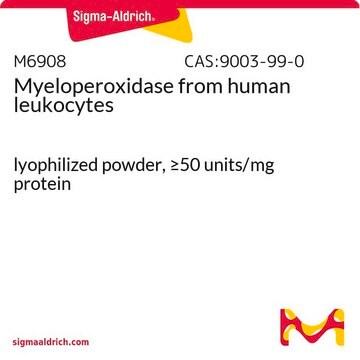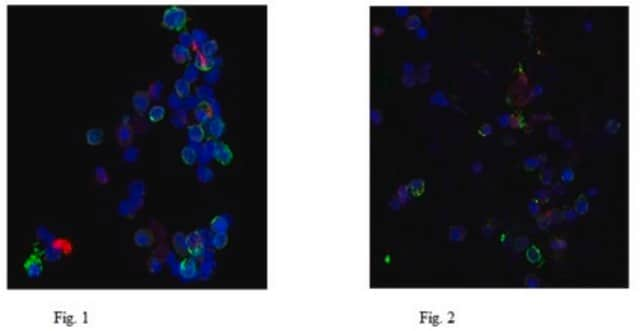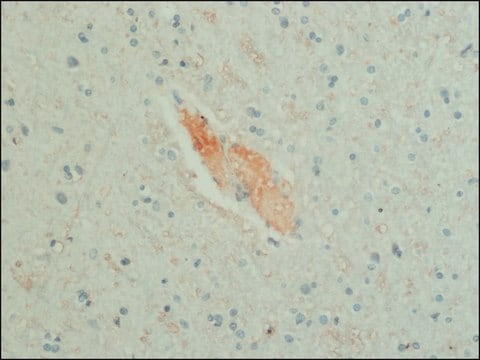475911
Myeloperoxidase, Human Polymorphonuclear Leukocytes
A lysosomal enzyme that catalyzes oxidations by hydrogen peroxide, including MPO-chloride-mediated killing of microbes and tumor cells, inactivation of chemotactic factors, and cross-linking of proteins.
Synonyme(s) :
Myeloperoxidase, Human Polymorphonuclear Leukocytes, MPO
About This Item
Produits recommandés
Source biologique
human
Niveau de qualité
Pureté
≥95% (SDS-PAGE)
Forme
lyophilized
Activité spécifique
150-200 units/mg protein
Fabricant/nom de marque
Calbiochem®
Conditions de stockage
OK to freeze
Solubilité
water: soluble (volume is lot-specific and can be found on the product label)
Conditions d'expédition
wet ice
Température de stockage
−20°C
InChI
1S/H2O3/c1-3-2/h1-2H
Clé InChI
JSPLKZUTYZBBKA-UHFFFAOYSA-N
Description générale
Avertissement
Définition de l'unité
Forme physique
Notes préparatoires
Reconstitution
Autres remarques
Panasenko, O.M., et al. 1994. Free Radic. Biol. Med. 16, 143.
Mulligan, M.S., et al. 1992. Br. J. Pharmacol.107, 1159.
Sharonov, B.P., and Churilova, I.V. 1992. Biochem. Biophys. Res. Commun.189, 1129.
Informations légales
Mention d'avertissement
Danger
Mentions de danger
Conseils de prudence
Classification des risques
Resp. Sens. 1
Code de la classe de stockage
11 - Combustible Solids
Classe de danger pour l'eau (WGK)
WGK 1
Certificats d'analyse (COA)
Recherchez un Certificats d'analyse (COA) en saisissant le numéro de lot du produit. Les numéros de lot figurent sur l'étiquette du produit après les mots "Lot" ou "Batch".
Déjà en possession de ce produit ?
Retrouvez la documentation relative aux produits que vous avez récemment achetés dans la Bibliothèque de documents.
Notre équipe de scientifiques dispose d'une expérience dans tous les secteurs de la recherche, notamment en sciences de la vie, science des matériaux, synthèse chimique, chromatographie, analyse et dans de nombreux autres domaines..
Contacter notre Service technique









